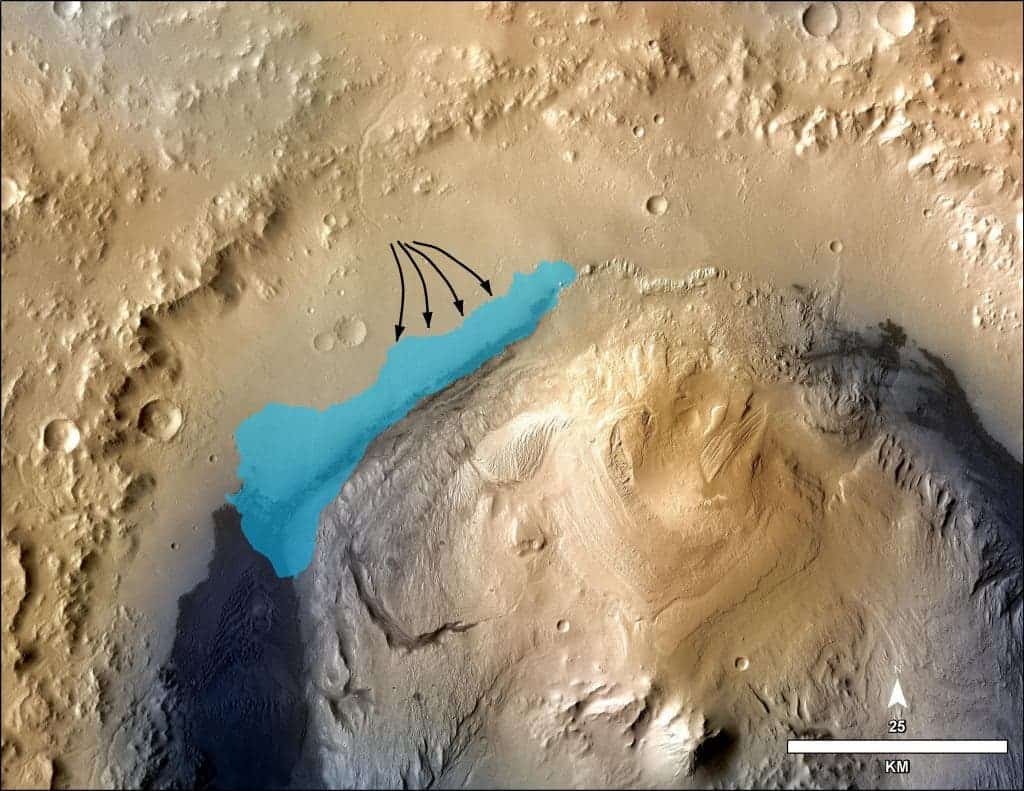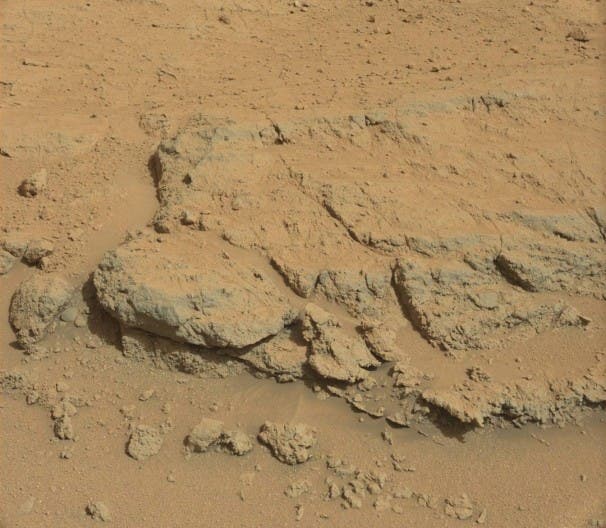NASA’s Curiosity rover has come up with yet another remarkable discovery – evidence of an ancient, freshwater lake, with water that was likely very similar to that of today’s Earth lakes. The feature is thought to be part of a longstanding aquatic environment which could have supported simple life forms.

Image Credit: NASA/JPL-Caltech/MSSS
“In March, we did know that we had a lake, but what we weren’t sure of was how big it was and how long it lasted, and also we were not sure about the broader geological context that supports the presence of lakes coming and going for a very long time,” said John Grotzinger – a Caltech planetary geologist who is the chief scientist of the Curiosity rover missionsaid in an interview. He is the author of the scientific paper called “A Habitable Fluvio-Lacustrine Environment at Yellowknife Bay, Gale Crater, Mars.”
“This is really similar to an Earth environment,” he said at the AGU news conference.
Scientists have known for a while that in its earlier days, Mars looked a lot more like the Earth than it does now. There have been several clear indications of water on Mars, but this is the best evidence yet that Mars had swimming holes that stuck around for thousands or perhaps millions of years. It was almost certainly very cold, but still habitable. The former lake’s size was comparable to that of the New York finger lakes – approximately 40 km in length and less than 10 in width. The freshwater may have sometimes frozen over, but the research shows that the lake was not some momentary feature, but rather was part of a long-lasting habitable environment that included rivers and groundwater – very favorable conditions of supporting life.
“If we put microbes from Earth and put them in this lake on Mars, would they survive? Would they survive and thrive? And the answer is yes,” said Grotzinger.

However, Curiosity won’t be able to provide more information on the potential (former) habitability of the lake bed. If microorganisms did inhabit the lake, it’s likely that they greatly resemble chemolithoautotrophs – mineral eaters which typically thrive in exotic environments such as caves or deep sea underwater vents – and Curiosity lacks the tools to answer these issues.
But researchers are hyped about this discovery nonetheless.
“I’m most excited about the nature of the water,” said Jim Bell, an Arizona State University scientist who has worked with the cameras on Curiosity as well as two precursor rovers, Spirit and Opportunity, and is a co-author of four of the new papers. “Previous results from Spirit and Opportunity pointed to very acidic water, but what we’re seeing in Gale Crater is evidence of fresh water. Very neutral. Drinkable.”
In the time it has spent on the Red Planet, the brave rover has provided incredibly valuable information. In a little more than a year on the Red Planet, the mobile Mars Science Laboratory has determined the age of a Martian rock, found evidence the planet could have sustained microbial life, taken the first readings of radiation on the surface, and shown how natural erosion could reveal the building blocks of life.


